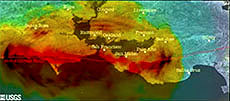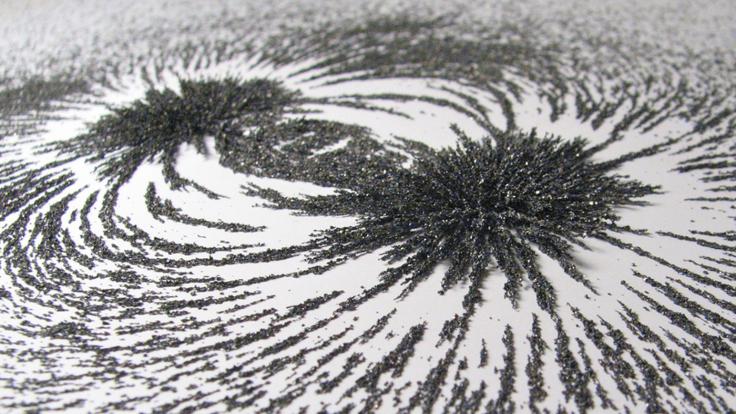This article first appeared in Fermilab Today Sept. 22.
A screenshot of a computer simulation of the 1906 earthquake that shook the San Francisco Bay Area. The red areas indicate the most intense shaking. Image courtesy of NEES and USGS.
By partnering with a network of earthquake engineering research sites, Fermilab could ultimately help to reduce the losses caused by earthquakes and tsunamis.
The George E. Brown, Jr. Network for Earthquake Engineering Simulation, or NEES, is a consortium of 14 research equipment sites committed to sharing both information and equipment. They share the common goal of modeling and simulating earthquakes, tsunamis, and their effects on human-made structures.
On Oct. 1, the new NEES Community and Communications Center, or NEEScomm, will open its doors at Purdue University in West Lafayette, Ind., thanks to a $105 million grant from the National Science Foundation.
“The large physics experiments have a lot of experience in terms of technical collaborations between the universities’ researchers and engineers,” said Ruth Pordes, associate head of Fermilab’s Computing Division. “We can bring that experience to the table.”
Pordes will contribute a few weeks of work each year to NEES by serving on NEES’ project advisory committee and chairing the project’s community collaboration subcommittee. In those capacities, she works to build synergy with related projects in cyberinfrastructure, site operations, and educational outreach.
Collaborations, such as Open Science Grid, which has members at many NEES institutions, help to bridge the divide that can exist between groups at a given institution. Pordes, who also holds a leadership role in OSG, wants to make those collaborations stronger.
“I want to foster a direct connection between earthquake engineers in the engineering faculty and the other groups doing distributed data and computing at their universities,” Pordes said.
NEES isn’t the only one that benefits from this partnership. “The physics community and Fermilab benefit from the chance to demonstrate our physics technology in a broader setting,” Pordes said. “This is a practical technical way to do so.”







